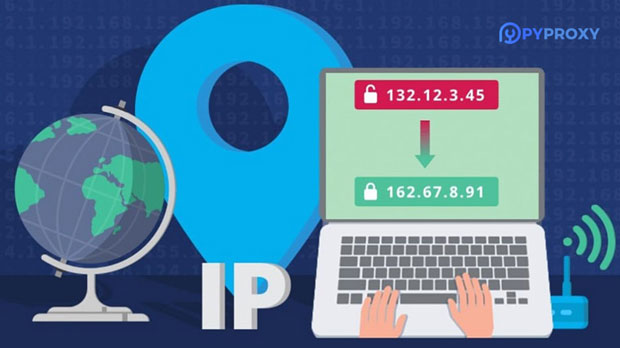In the world of internet privacy and security, using a proxy server has become an essential tool for many users. Specifically, for Android users who require a free socks5 proxy, finding a reliable and secure option can be challenging. A Socks5 proxy offers high performance and better security features than traditional HTTP proxies, making it a popular choice for users who want to mask their IP address, access restricted content, or maintain anonymity online. In this article, we will explore the use of free socks5 proxies that are ideal for Android devices, focusing on their advantages, setup process, potential risks, and the best practices for safe usage. What is a Socks5 Proxy?Before diving into the specifics of free Socks5 proxies, it’s important to understand what a Socks5 proxy is and how it works. A Socks5 proxy is an internet protocol that routes your traffic through an intermediary server, effectively masking your original IP address and providing anonymity while surfing the web. Unlike its predecessor, Socks4, the Socks5 proxy provides more features, including authentication and support for UDP (User Datagram Protocol) traffic, which makes it more versatile.For Android devices, using a Socks5 proxy means that users can bypass restrictions imposed by geographic locations, filter out unwanted content, and increase their privacy when browsing online. These proxies are particularly useful for users who want to ensure secure connections without compromising speed, as they are often faster than traditional VPN services.Benefits of Using Free Socks5 Proxies on Android DevicesUsing free Socks5 proxies on Android devices comes with several key benefits. However, it is crucial to weigh these benefits against potential drawbacks to make an informed decision.1. Enhanced Privacy and Anonymity One of the primary reasons people use Socks5 proxies is to enhance their privacy. By routing traffic through a proxy server, users’ real IP addresses are hidden, preventing websites from tracking their browsing habits. This level of anonymity is essential for those concerned about online surveillance, targeted ads, or maintaining privacy while accessing sensitive content.2. Bypassing Geo-restrictions A free socks5 proxy allows users to bypass geographical restrictions imposed by websites, apps, or streaming services. For Android users who want to access content that is unavailable in their region, using a proxy can provide a solution to unlock access to a broader range of media, websites, and services.3. Speed and Performance While free proxies generally come with some limitations, Socks5 proxies tend to offer faster connection speeds compared to other types of proxies. This is particularly important for Android users who use mobile data and want to avoid throttled or slow internet speeds while browsing or streaming content.4. No Need for Special Software Unlike VPNs that often require dedicated apps, setting up a Socks5 proxy on an Android device can be done within the device’s network settings, making it a more convenient option for users who don’t want to install additional apps or software. This ease of setup makes it accessible to less tech-savvy users as well.Challenges and Limitations of Free Socks5 Proxies on AndroidWhile free Socks5 proxies offer many benefits, they also come with their own set of challenges and limitations. It is essential to be aware of these issues to ensure that users can make an informed choice about using such services.1. Security Risks One of the biggest drawbacks of using a free Socks5 proxy is the potential security risk. Since these proxies are free, the provider may not offer strong encryption, leaving users vulnerable to hackers, data breaches, or malware attacks. Additionally, malicious proxies can compromise users' privacy and log sensitive data, such as passwords or personal information.2. Limited Bandwidth and Reliability Free Socks5 proxies often come with restrictions on bandwidth, meaning that users may experience slower speeds, higher latency, or even interruptions in service. This is particularly problematic for Android users who rely on a stable internet connection for browsing, gaming, or streaming content. Furthermore, free proxies may experience downtime or become overloaded, leading to unreliable connections.3. Potential for Blocking and Detection Many websites and services are aware of the widespread use of proxies, especially free ones. As a result, some sites may actively block or restrict access from known proxy servers. This could limit the effectiveness of using a free Socks5 proxy to access content or bypass geo-blocks.4. Ethical and Legal Concerns Using free proxies may sometimes cross into a legal gray area. Some proxies are set up to circumvent copyright protection measures or to access content that would otherwise be restricted. While using a Socks5 proxy is not inherently illegal, users should ensure that they are not violating any terms of service, local laws, or ethical guidelines while browsing the internet.How to Set Up a Free Socks5 Proxy on Your Android DeviceSetting up a Socks5 proxy on an Android device is a relatively straightforward process. Here is a step-by-step guide to help users configure their devices for secure and anonymous browsing.Step 1: Obtain Proxy Server Information To use a Socks5 proxy, you will need to obtain the server address (IP address) and port number from the proxy provider. Many free proxy services provide this information on their websites. Be cautious and ensure that you choose a reliable proxy server to minimize security risks.Step 2: Access the Android Network Settings Go to your device’s “Settings” menu, then navigate to “Wi-Fi” or “Network & Internet.” Choose the Wi-Fi network you are currently connected to and tap on the network name to open its settings.Step 3: Configure the Proxy In the network settings, look for the “Proxy” section, then select “Manual.” Enter the Socks5 server’s IP address and port number in the designated fields. Be sure to choose “Socks5” as the proxy type if it is available. If the proxy requires authentication, enter your username and password.Step 4: Test the Connection Once you’ve entered the proxy details, save the settings and exit the configuration menu. Open a web browser or any app to test the connection. If everything is set up correctly, your traffic will be routed through the proxy server, allowing you to browse securely.Best Practices for Using Free Socks5 Proxies SafelyWhile free Socks5 proxies offer convenience and privacy, there are several best practices that users should follow to ensure safe usage:1. Choose Reliable Providers When selecting a free Socks5 proxy, ensure that the provider has a reputable track record. Look for reviews and feedback from other users to gauge the trustworthiness of the service. Avoid proxies that do not provide transparency about their policies, especially those related to logging user activity.2. Use the Proxy Only for Safe Activities Since free proxies may have limitations and risks, avoid using them for sensitive activities, such as online banking or entering personal information. Stick to using the proxy for less sensitive tasks like browsing or accessing restricted content.3. Regularly Monitor Your Security Use additional security measures, such as antivirus software or a firewall, to protect your device while using a proxy. Regularly check for updates on your proxy settings and stay vigilant for signs of potential security breaches.4. Avoid Using Proxies for High-Sensitive Operations Free Socks5 proxies should not be relied upon for highly sensitive operations, such as financial transactions or accessing secure accounts. Consider using a premium VPN service for more robust encryption and security.ConclusionFree Socks5 proxies can offer Android users a valuable tool for enhancing privacy, bypassing restrictions, and improving internet security. However, they come with their own set of risks and limitations that users should be aware of. By carefully selecting reliable services, following best practices for secure usage, and understanding the potential challenges, users can maximize the benefits of using a free Socks5 proxy while minimizing its drawbacks. For those who prioritize security and performance, a paid proxy or VPN service may be a more reliable and secure choice in the long run.
Jan 03, 2025





















































